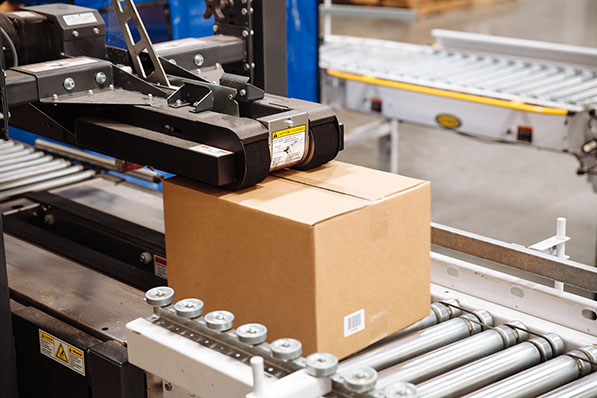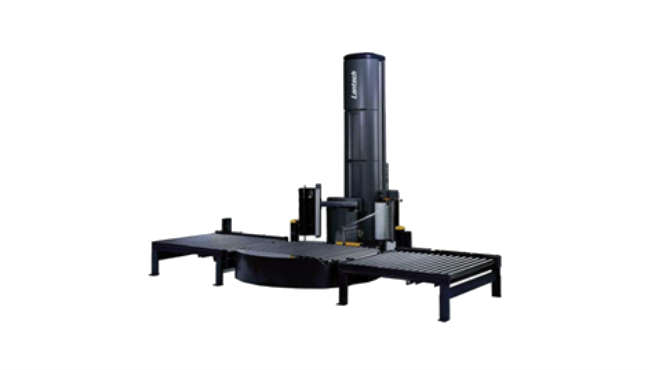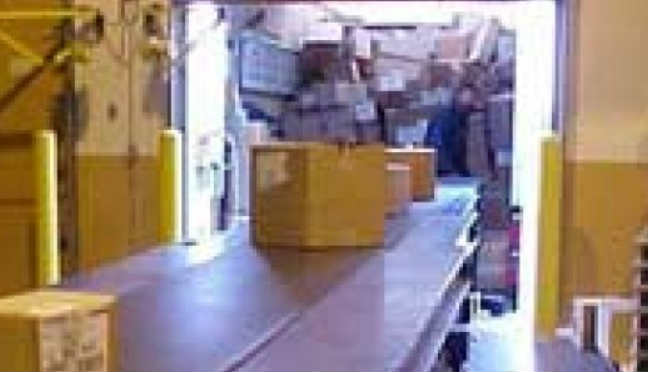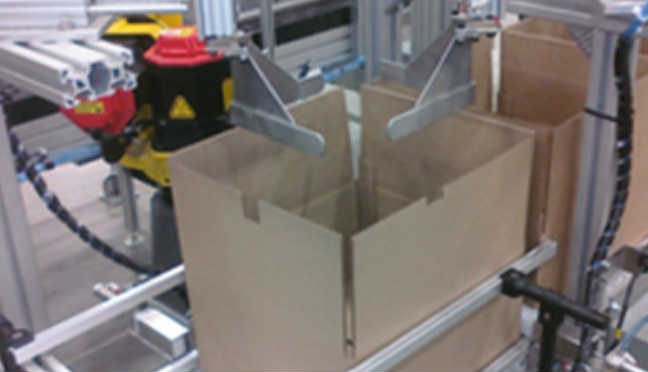End of Line Automation
- Your company uses precision controls and automation equipment to produce your product or assemble your orders to ship, but what about the ‘Final 100 feet”?
- Are there many manual process, lots of ‘hands on’ work,in the final stages of your operation?
- End of line processes is an often over-looked and confounding portion of plant operations, often addressed by throwing more temp labor at theproblems.
- However, there are many end of line functions which, if properly automated, can increase throughput and offer a better bottom line, year after year.
In Motion Scales and Manifesting

Print and Apply Applications
The automated print and apply of labels to cartons can create huge gains in productivity due to the capacity to handle up to 100 cartons per minute. Comprised of two primary elements: (a) the print engine which actually prints onto the label the necessary information and barcodes, and (b) the applicator. The applicator applies the label to the package while the package is in motion by a mechanical roll-on, tamp-on, or blow-on type process. During operation, the WCS controls the conveying, tracking, labeling and validation of every package to ensure the correct packing slip or shipping label is precisely applied in seconds.
Carton Forming and Induction
Carton formers are designed to automatically erect, fold, and bottom seal RSC corrugated cases. Empty cases are then fed onto conveyor lines so that they can be automatically routed and delivered to appropriate destinations for packaging (such as food products) or order fulfillment. Carton erectors must be adjusted to the carton dimensions currently being consumed. When various carton sizes are being used at the same time, dedicated conveyor lines are used for holding, sequencing, and automatically releasing the appropriate carton sizes based upon what the automation system or operation is requesting.

Packing and Sealing
There are dozens of methods for packaging and sealing a carton prior to shipment. Cartons with loose items often require dunnage – crumpled paper, disposable peanuts, sealed air bags, etc., to protect the items during shipment. Alternatively, special machines can provide void-free space reducing the amount of dunnage required. The design of packaging workstations require careful planning to maximize ergonomic benefits while ensuring employee safety and mobility. Packages are typically sealed with adhesive glue melt or tape.
Based upon throughput requirements, ranging from a few cartons a minute to over a hundred cartons a minute, McCombs Wall will carefully select the appropriate manual or fully automated sealing technologies to create the best overall value to help reduce your total cost of shipping.
Palletizing/ Stretch Wrapping
Conventional palletizers operate with cartons being inducted at either floor level or high level. They are engineered and priced according to production rate, pallet patterns to be built, and product to be handled. Characteristics vary from cartons, bags, trays, bundles, display packs and other. With rates to over 150 cases per minute, conveying systems that infeed the product as well as those that take away finished pallets are designed to maximize machine utilization while minimizing total investment.

Inline stretch wrapping is often integrated into pallet handling conveyor systems to help secure the load and to provide protection during storage and shipment.

Trailer Loading and Unloading
Trailer Loading and Unloading conveyors can significantly improve dock productivity, workplace ergonomics, and trailer rotation. Telescoping Boom Trailer Loaders and Flexible Conveyors enable “fluid loading” and unloading of trailers and containers. They fully extend into open trailer workspace, minimizing walk and carrying distances which improves ergonomics and workplace safety. The telescopic action and height positioning adjustment of the boom unit is fully controlled by the operator at the discharge end with joystick control.
The flexible unit is typically manually adjusted by pulling the unit behind the employee. Positioning helps to create the most productive work environment possible for the employee as he moves into and out of the trailer. They are used to handle parcels, packages, boxes, tires or any other form of loose-loaded cargo.
Custom Application
So you have a tough challenge, and it appears there is no “Off the Shelf” solution?
No need to worry, as the staff of engineering at McCombs-Wall has many years experience in creating custom solutions to tough problems. As a mechanical and electrical engineering company, our experts work as a team to explore new methods and devices that will meet the requirement. We can design and build electro-mechanical devices and programs from scratch, and may be a ‘one-of” solutions for your company. Bring us your tough challenges…we will do our best to solve them, permanently and economically.

